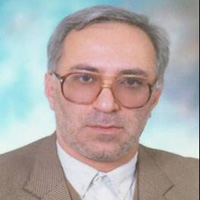Analysis of the effective factors on strategic planning of heritage tourism (Case study: Tehran city)
The dynamic tourism industry is an important tool for spatial development due to its high potential in offering employment opportunities and attracting capital. Therefore, the knowledge of tourism is important for economic dynamism and development at different scales. Heritage tourism is a kind of urban tourism, and the spatial strategic planning of heritage tourism is a coordinating process between internal resources and external opportunities of the region. Its purpose is to look through the strategic space viewpoint and determine the opportunities that can benefit the region. However, it has not been considered in the tourism planning policies of Tehran metropolis. In this regard, all available capacities and assets of Tehran in heritage tourism and culture through spatial linkages are not integrated, and there are no clear strategies for planning in this area. Meanwhile, Tehran has magnificent valuable historical and cultural monuments and has several thousand years of historical civilization and cultural support. This issue shows the importance of developing heritage tourism planning in Tehran. Optimal utilization of all capacities in a transparent, long-term, and sustainable framework based on an efficient strategic plan can play an important role in advancing the tourism development goals in Tehran and its introduction in the regional, national and global arenas. Due to the importance of the subject, this study aims to analyze the strategies proposed in the sustainable spatial, strategic plan of heritage tourism in Tehran and provide a model of strategic tourism planning.
The present research is applied in terms of purpose and is mixed in terms of methodology. The required information and data were collected by documentary-bibliographic and field observation methods. In this study, in order to enumerate research strategies in the strategic tourism planning model, a legacy of available resources has been documented. The strategies identified by ten professors and Ph.D. students who have studied in the field of heritage tourism and are aware of the subject and environment of the study area were modified and, after saturating the opinion of experts on the comprehensiveness of the strategies, were selected as the final research strategies. After the strategy selection process, the multi-criteria decision making method and the SWARA method have been used to weigh and measure the importance of the strategies.
In the present study, based on experts’ opinions, four main factors and 28 strategies were introduced. Based on the research findings, these main strategies did not work in the same way in terms of their importance in the presented model. Among these, the strategy of laws with a final weight of 2.37 is the most important factor. Planning and management strategies and social strategies with 1.95 and 1.70 were in the second and third priority, respectively. Finally, the economic strategy with a final weight of 1.59 was identified as the least important strategy. The most important strategies among heritage tourism planning strategies in Tehran include providing incentive packages for the repair and restoration of historic buildings by the government with a final weight of 0.56 among the strategies of the laws, the strategy of supporting job creation and increasing public income at the local community level with a final weight of 0.36; economic strategies; the strategy of protection of buildings and historical monuments with a final weight of 0.49; planning strategies and management, and the strategy of preventing damage to indigenous culture due to frequent encounters of tourists with different cultures with a weight of 0.42. Consequently, based on the quantitative and qualitative evaluation of research strategies and using theoretical foundations, and understanding the current situation of the study area, a suitable model of strategic planning of heritage tourism is presented.
According to the research findings and the strategic planning model of heritage tourism in Tehran, the most important factors affecting heritage tourism planning in Tehran are laws and regulations, management and planning, and social and economic factors, respectively. Each of these main factors is achieved through strategies. Obviously, addressing each of these strategies is essential for achieving the desired planning pattern, and simply paying attention to one without considering the other makes it difficult to understand the pattern. Suppose we follow the theoretical and empirical hierarchy of research. In that case, having an appropriate model of strategic planning to achieve sustainable development of heritage tourism becomes clear. Based on the results, the heritage tourism planning process using the following model includes several basic steps such as determining the factors of executive considerations in the field of laws and regulations and planning and management and environmental monitoring of the study area in terms of socio-economic effects of tourism on the host society. In this regard, the main factors of planning have been selected, and executive strategies have been presented in line with each factor. The first step in this model is to determine the strategies of laws and regulations related to historical attractions and then plan and manage them properly using the defined strategies and implement these strategies by applying techniques and strategies to measure and analyze the social and economic effects of tourism development. Drawing this pattern determines how heritage tourism can move towards a better future. Finally, it can be concluded that Tehran city, due to its many capabilities and attractions, valuable historical monuments and political-administrative position, and its capital, can become a suitable context for tourists and become a heritage tourism hub of the country and the region with proper planning.
- حق عضویت دریافتی صرف حمایت از نشریات عضو و نگهداری، تکمیل و توسعه مگیران میشود.
- پرداخت حق اشتراک و دانلود مقالات اجازه بازنشر آن در سایر رسانههای چاپی و دیجیتال را به کاربر نمیدهد.


